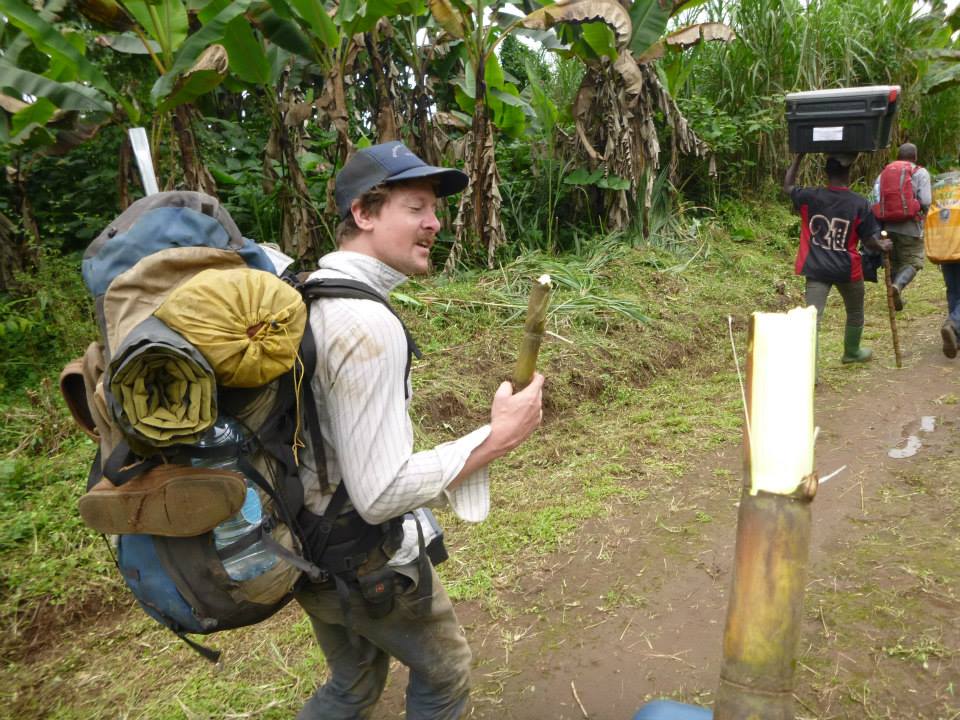Research on Hylarana in sub-saharan Africa

Greg Jongsma – Masters Research
Background
The genus Hylarana is a member of the family Ranidae and part of the larger radiation called the Natatanura. Ranidae is one of few globally distributed frog families and comprises more than 350 species (Frost 2014) that exhibit a wide range morphological and ecological diversity. The genus Hylarana is unique among the members of Ranidae because its distribution spans two continents, covering much of sub-Saharan Africa and southern Asia. This distribution is supported by numerous molecular studies including Asian and African Hylarana species that recover the genus as monophyletic with respect to other ranid genera. This extensive distribution makes Hylarana ideal for investigating patterns of diversification both within Africa and between Africa and Asia. Within Africa, several species have extensive distributions, spanning several recognized biogeographic barriers making them ideally suited for investigating biogeographic patterns at the continental scale.
Two central hypothesis have been proposed since the 19th century to explain faunal diversity in the tropics: the Riverine Barrier Hypothesis and the Pleistocene Forest Refuge Hypothesis. Both models rely on allopatric speciation to explain tropical diversity. Biogeographic barriers like rivers have long been recognized as a major driver of speciation. These barriers are physical features of the landscape that impede gene flow between populations. Recent studies using molecular approaches to investigate animal diversity in Africa have found that cryptic species can be separated from sister taxa across biogeographic barriers such as rivers.
Often when biogeographic barriers are not obvious boundaries, or when cryptic species are found in sympatry, the Pleistocene Forest Refuge theory is invoked. This theory proposes that repeated forest contraction events since the Pleistocene have been a major isolating force driving allopatric speciation across tropical regions, including Central Africa, and that subsequent forest expansion events have brought closely related species into sympatry. It is most likely that both refugia and geographic barriers have together influenced species diversity and population structure in the Afro-tropics. Detailed study of widespread, tropical species with low dispersal capabilities is especially attractive for understanding patterns of speciation in Africa.
For this study, we concentrated on the poorly studied species of Hylarana restricted to sub-Saharan Africa, which includes 11 currently recognized species. Our goals for this project are (1) to identify undescribed cryptic diversity of African Hylarana and in doing so refine regions of endemism in Central Africa, (2) explain patterns of diversification in context of known models of speciation, and (3) to estimate divergence times among African species as well as between Africa and Asia.
Our Study’s Findings
We provide the first phylogenetic study of the African species of the genus Hylarana, which provides insights into amphibian diversification across the continent. This phylogeny includes nine of the 11 recognized species in Africa, including samples that span much of the geographic distribution for even the most widespread species (321 samples in total). All of our analyses support African Hylarana as monophyletic, suggesting there was a single dispersal event into Africa. Our phylogenetic and species delimitation analyses strongly suggest that diversity has been underestimated for Hylarana across sub-Saharan Africa. There are at least five undescribed cryptic Hylarana species, some of which are separated from their sister taxa by a biogeographic barrier and some that are sympatric. This suggest that both the River Barrier Hypothesis and Pleistocene Refuge Hypothesis are driving species diversification of Hylarana across sub-Saharan Africa.
Our time-calibrated phylogeny estimates that the divergence between African and Asian Hylarana occurred during the Miocene between 17 and 10 mya. The only previous time calibrated phylogeny that included both African and Asian Hylarana estimated the divergence ~30 mya during the Oligocene. During the Oligocene, Africa was a continental island with no land connections to Asia or Europe. Geological evidence supports that the first permanent land-bridge, likely since the Cretaceous, connecting Eurasia with north-eastern Africa formed during the middle Miocene around 15 million years ago (Bosworth, et al. 2005). This makes a Miocene Era dispersal a more plausible scenario then one during the Oligocene, which would have required multiple overseas dispersal events.


